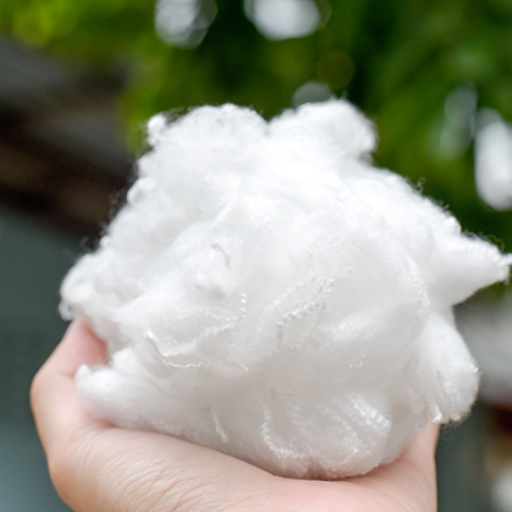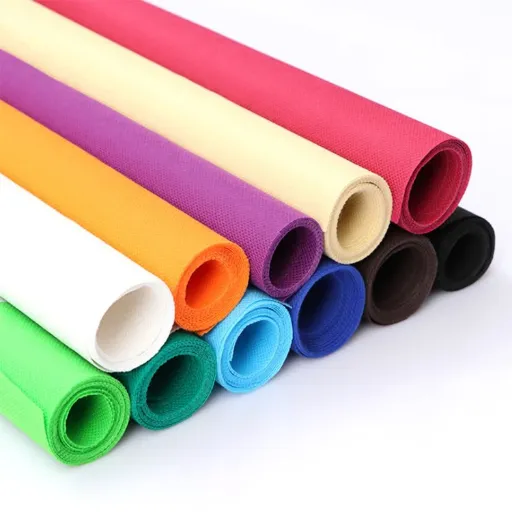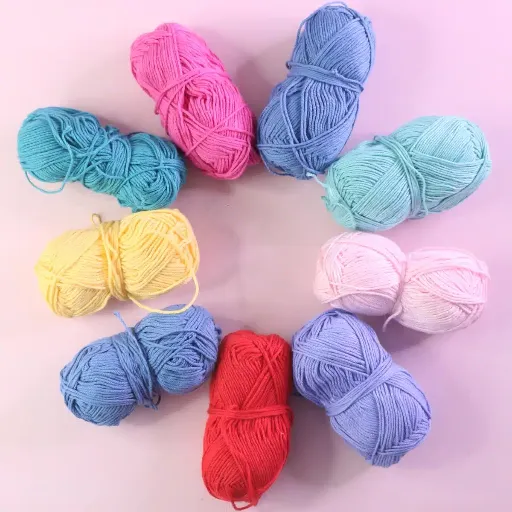Polypropylene fabric has its niche in various industries, and the general public is rarely familiar with its unusual characteristics and multiple applications. Being engineered for durability, flexibility, and efficiency, lightweight materials are chosen for medical textiles, outdoor gear, or even industrial packaging. So what precisely sets this fabric apart from the average synthetic fabric? This guide examines the key features, new applications, and growth opportunities for polypropylene fabric. Whether you are a manufacturer looking for innovative solutions or simply curious about how textile technologies are incorporated into everyday products, this comprehensive overview of polypropylene fabric will take you along on its journey into the science and utility. Get set to awaken to the potential of this ingenious material and see how it is driving changes in various industries worldwide.
Introduction to Polypropylene Fabric
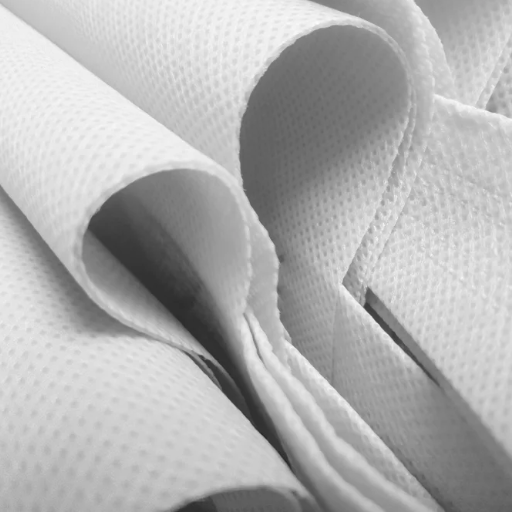
Polypropylene fabric is a synthetic textile made through the polymerization of propylene. It is widely used as a superb material due to its durability, resistance to water, chemicals, UV rays, and its lightweight nature. In view of such features, polypropylene is used by industries such as the medical, automotive, and home goods sectors. Polypropylene sheets, primarily used in the nonwoven form, are among the most popular products from this family and can be considered for use in reusable shopping bags, medical-grade masks, and hygiene products. The woven form, on the other hand, is used for ropes, carpets, and outdoor furniture. The recyclability aspect of this material further earns it some brownie points in the environmentally aware industry.
History and Overview of Polypropylene
Polypropylene, a thermoplastic polymer, was first synthesized in March 1954 by Giulio Natta and his assistants in Milan. Drawing on the extensive knowledge of the German chemist Karl Ziegler, who had formulated the Ziegler-Natta catalyst, Natta polymerized propylene into a regular structure of high crystallinity. For this, he was bestowed with the Nobel Prize in Chemistry in 1963, sharing it with Ziegler for their pioneering research on polymers. By 1957, the industrial-scale manufacture of polypropylene had emerged in Europe, marking a significant breakthrough in modern materials development.
Polypropylene is one of the most widely recognized plastics globally, with its production estimated to exceed 75 million metric tons annually. Polypropylene grabbed worldwide attention from industries because of its flexibility, durability, and low price. The evolution of modern polypropylene manufacturing, particularly through new catalytic technologies and improved polymerization methods, has enhanced the material’s properties, thereby incentivizing the production of large, specialized grades for specific end-uses. Alongside other properties, this flexibility helped polypropylene maintain its leading position in mass markets of packaging and textiles, automotive, and healthcare for decades.
Unique Characteristics of Polypropylene Fabric
- Hydrophobic Nature
Against the backdrop of fully hydrophobic properties, polypropylene fabric does not retain moisture it. It resists water penetration, with a moisture absorption rate of less than 0.01%, making it suitable for applications in activewear, medical fabrics, and water-resistant materials.
- Lightweight Composition
With densities in the order of about 0.90g/cm³, it is one of the lightest synthetic fibers and thus very comfortable. This property also lowers the overall weight of materials made from it, which is beneficial in the automotive and aerospace fields.
- High Chemical Resistance
The fabric resists and withstands the attack of various chemicals, whether acids, bases, or solvents, thereby maintaining durability in chemically aggressive environments, such as industrial filter media or chemical containment products.
- Strong Thermal Resistance
It is highly resistant to heat. It has a melting point of 320°F (160°C). The optimally produced higher grades can withstand even higher temperatures, thus providing thermal stability in more demanding applications, such as automotive interiors and food packaging.
- Exceptional Durability and Strength
Polypropylene fabric is lightweight but has very high tensile strength and resistance to abrasion. Consequently, it is suitable for the longevity of heavy-duty applications, such as conveyor belting, bags, and upholstery.
- Low Thermal Conductivity
Comparison with Other Synthetic Materials
|
Parameter |
Polypropylene (PP) |
Polyester (PET) |
Nylon (Polyamide) |
Acrylic |
PVC (Polyvinyl Chloride) |
|---|---|---|---|---|---|
|
Durability |
High abrasion resistance |
Very durable |
Extremely durable |
Moderate durability |
Very durable |
|
Moisture Resistance |
Excellent water resistance |
Good, absorbs minimal |
Moderate, absorbs some |
Good water resistance |
Waterproof |
|
Thermal Insulation |
Low thermal conductivity |
Moderate insulator |
Poor thermal insulator |
Excellent insulating |
Moderate insulator |
|
Strength-to-Weight Ratio |
High |
Very high |
High |
Moderate |
Moderate |
|
UV Resistance |
Moderate |
Excellent UV resistance |
Moderate UV resistance |
Poor UV resistance |
Excellent UV resistance |
|
Cost |
Low |
Moderate to high |
High |
Moderate |
Low to moderate |
|
Elasticity |
Low stretchability |
Moderate elasticity |
High stretchability |
Low |
Rigid, no elasticity |
|
Environmental Impact |
Non-biodegradable, recyclable |
Recyclable |
Non-biodegradable |
Non-biodegradable |
Non-biodegradable |
|
Common Applications |
Packaging, outdoor gear |
Textiles, bottles |
Apparel, ropes |
Sweaters, gloves |
Flooring, upholstery |
Key Properties of Polypropylene Fabric
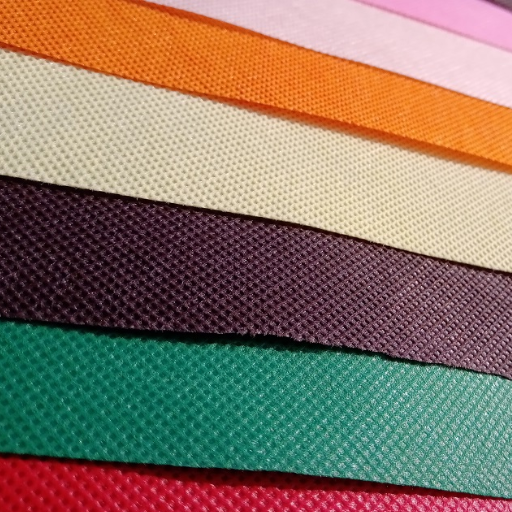
- Lightweight
Polypropylene is an almost weightless fabric with a density of about 0.91 g/cm³; this very characteristic makes it fine and one of the very light synthetic fibers in use.
- Water Resistance
The fabric is hydrophobic, meaning it repels water and dries very easily. It has a moisture regain of about 0.01%, so it is the perfect fibre for performance and outdoor applications.
- Chemical Resistance
The polypropylene may resist chemicals well, including acids, bases, and solvents. It is not easily broken down when exposed to most chemicals, thus remaining functional in diverse settings.
- Durability and Strength
The fabric has a high tensile strength, thus able to withstand great pressures and stress without damage. This, therefore, helps it in carrying out industrial packaging and strapping functionalities.
- Thermal Insulation
Being thermally less conductive, polypropylene is a good insulator and assists in the retention of heat. This property is great for use in cold-weather garments, such as thermal layers.
- Abrasion Resistance
In general usage, polypropylene fabric imparts some level of abrasion resistance. Prolonging the life of an object in this material makes the carpet, ropes, and industrial materials manufactured with it even better.
- Low Environmental Absorption
Polypropylene does not absorb moisture from the atmosphere into the grains, oils, or any other contaminants; hence, it retains its texture under humid or dirty atmospheric conditions.
Lightweight Nature of Polypropylene
Lightweight is perhaps the most celebrated property of polypropylene, which is instrumental for all applications calling for weight reduction. With a density of approximately 0.9 grams per cubic centimeter, it stands lighter than most common plastics, such as polyethylene or PVC. This phenomenon of low density endows polypropylene with high aptitude for use in automotive components, thereby decreasing the vehicle’s weight and, in turn, improving fuel efficiency. Second, such lightness facilitates better handling and easier transportation, thereby reducing logistics costs across various sectors. Lastly, due to its lightweight, polypropylene exhibits adequate mechanical strength, making it highly suitable for any burden.
Durability and Resistance to Moisture
Polypropylene exhibits excellent moisture resistance; therefore, it is a suitable material for applications under humid or wet conditions. Its structure prevents water absorption, thereby ensuring that it maintains its integrity and mechanical performance even when exposed to moisture for prolonged periods. This property is secretly desirable for sectors such as packaging, in which polypropylene is indeed relied upon to make containers that seal airtight and waterproof, and construction, where it is the foundation of durable components that resist the weather well. Additionally, resistance to chemical deterioration enhances durability, allowing the compound to withstand a range of acids, bases, and solvents without compromising its performance. These qualities place polypropylene at the top of the list for applications that demand consistent reliability over long periods in less than favorable environmental conditions.
Stain Repellency of Polypropylene Fabrics
Polypropylene cloths have a high degree of stain-repelling properties. This is attributed to their very low surface energy and the molecular non-polar nature of the polymer; thus, liquids and most substances that stain, going from oils to water-based solutions, will refuse to cling to the fiber surface. Moreover, with advances in materials engineering, this inherent property has been amplified through the formulation and application of protective coatings such as fluoropolymers that render firmly enhanced resistance capable of repulsing a very wide range of possible stains. The literature suggests that polypropylene can resist staining from coffee, wine, and grease after multiple applications without undue discoloration or absorption. This is why it is widely used for upholstery, carpets, and other surfaces subjected to heavy exposure, while impeding the cleaning process and maintenance of the surface appearance. Such performance, combined with mechanical durability, makes polypropylene fabrics a practical and affordable solution for use in tough environments.
Common Uses of Polypropylene Fabric
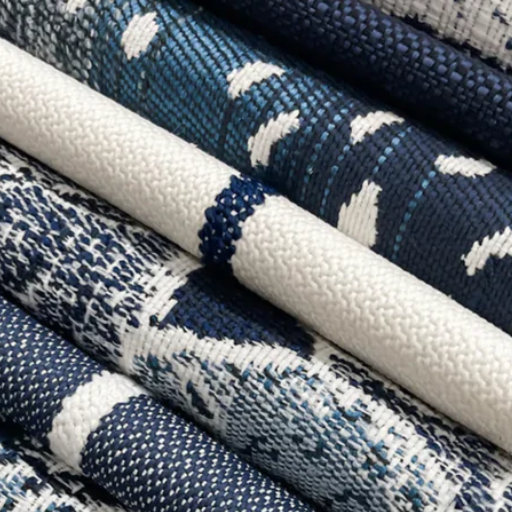
- Automotive Industry
Due to its capability to resist beverage spilling stains and wear out, it finds strong footing in automotive seat covers and carpeting and interior lining in general. A pie chart shows that the use of polypropylene accounts for 32% of automotive plastics worldwide.
- Medical Applications
Because it is non-toxic and withstands sterilization, polypropylene is one of the primary materials used in the manufacture of medical textiles, including surgical gowns, masks, and disposable gloves. The usage of medical nonwovens is forecasted to increase at a CAGR of 6% from 2023 to 2030.
- Geotextiles
Due to their inherent tensile strength and resistance to moisture and chemical attack, polypropylene fabrics are also widely used in geotextiles for erosion control, drainage, and soil stabilization as economically viable solutions for very expansive civil engineering works.
- Sports and Activewear
Due to its moisture-wicking and breathability properties, polypropylene is considered a great companion for sportswear, socks, and outdoor apparel. Being a moisture-wicking substance, it actively increases comfort by drying out clothing during any kind of physical activity.
- Home Furnishings
Polypropylene carpets are in high demand for both residential and commercial use worldwide, with an overall demand exceeding 4 million metric tons per annum.
- Packaging Materials
Polypropylene fabric is a crucial material for lightweight, durable, and weatherproof packaging solutions used in the manufacture of reusable bags, bulk sacks, and food containers. Their recyclability aligns well with sustainability efforts in the packaging sector.
Applications in the Medical Industry
- Medical Syringes and IV Components
Injections, syringes, IV bottles, and tubing components are among the uses of polypropylene. Lightweight and suitable for sterilization methods like autoclaving, ensure its indispensable usage in this domain. Impelled by burgeoning healthcare requirements, the market for polypropylene syringes is projected to record compound growth at 5.2% CAGR from 2023 to 2030.
- Surgical Instruments and Trays
Stability under impacts and easy sterilization conditions make polypropylene a common material for surgical trays, instrument cases, and containers. Such medical apparatus necessitates being able to perform in conditions entailing repeated sterilization cycles that include high heat and some chemical disinfectants.
- Prosthetics and Orthotics
Polypropylene is the material of choice in the manufacture of prosthetic limbs and orthotic devices, with technical possibilities exhibiting good flexibility, rigidity, and affordability for custom-fitted designs, while remaining lightweight, a positive characteristic for the patient’s comfort.
- Nonwoven Medical Fabrics
Nonwoven fabrics of polypropylene find their use in making masks, surgical gowns, caps, and drapes. Airborne properties, filtration efficiency and hypoallergenic counterparts cemented their standing, especially during the COVID-19 pandemic when the PPE demands took a huge spike.
- Labware and Diagnostic Equipment
Polypropylene material is frequently employed in laboratory equipment internally, such as test tubes, petri dishes, and specimen containers. Due to its resistance to corrosive reagents, it ensures interaction with almost all laboratory reagents. Polypropylene demand in diagnostic devices is expected to grow due to the increasing incidence of chronic ailments and advances in medical research.
Fashion and Lifestyle Uses of Polypropylene
In the realm of fashion and lifestyle, polypropylene has found numerous applications for its lightweight, sturdy, and water-resistant properties. It goes into active wear and outdoor gear under the scheme of the fibers of polypropylene themselves, which remove moisture from the body and thus ensure that the wearer remains comfortable whilst conducting heavy exercise or amid uncertain weather. With resistance to staining and stretching, it also becomes a solution for reusable shopping bags, suitcases, and accessories, thereby tapping into market demand for sustainable and green products. Better recycling opportunities enhance the appeal of polypropylene fiber in addressing environmental challenges, particularly as global consumers prioritize sustainability in fashion and daily essentials.
Polypropylene in Packaging Solutions
Benefits and Advantages of Polypropylene
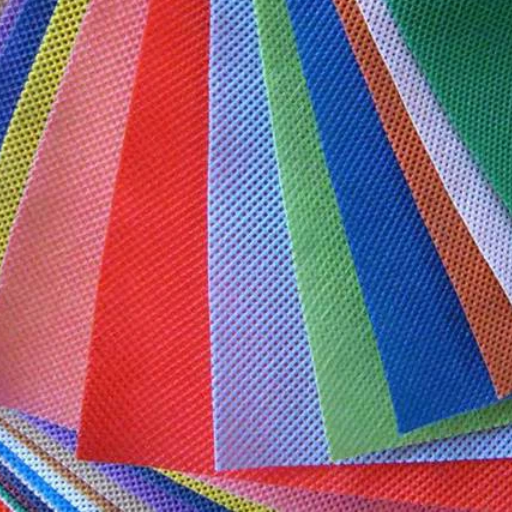
- Durability
Being highly resistant to physical stress, including impact and flexing, polypropylene is used for goods requiring toughness and long life.
- Lightweight
Because of its low density, handlers find it convenient for its storage or in transporting goods, especially for packaging or automotive applications.
- Chemical Resistance
The material has a high resistance against different chemicals, acids, and bases, which allow it to be utilized for a potential multitude of applications, both industrial and consumer grade.
- Thermal Stability
Polypropylene suits an environment wherein high-heat application or freezing is done, thus maintaining its shape.
- Recyclability
This contributes to the clean environment by showing sustainability efforts and thus reducing the degradation of the environment.
- Cost-Effectiveness
It is cheap compared to other polymers and does not compromise on its applications.
Versatility of Polypropylene Fabric
The versatility of polypropylene fiber is evident in its applications across various industries. Foremost, in the case of medical textiles, the nonwoven variety of the polymer fabric serves for manufacturing surgical masks, gowns, and other fleece disposables for protective equipment that is light yet tough. The fabric, also sufficiently moisture-wicking and chemically resistant to degradation, is further apt for activewear and outdoor equipment.
Polypropylene fabric comes to the rescue in various applications, including packaging, bulk containers, tote bags, geotextiles, and more. It attests to the ability of strong tensile strength and resistance to tearing. In addition to being used in filtration systems for water, air, and industrial applications, polypropylene demonstrates its versatility and performance in both household and industrial settings. Such wide applications attest to the importance of polypropylene fabric in current industries and innovation.
Cost-Effectiveness of Polypropylene
Polypropylene is often referred to as the “least expensive plastic of today” due to its price falling somewhere between rubber and oxide, with significantly lower production expenses compared to polypropylene itself. The rather cheap raw material costs of polypropylene make it an attractive option in saving total production costs by companies while not compromising on the quality of their products. At the same time, because the material is so lightweight, it actually minimizes transportation charges along the supply chain, thereby cementing its viability in petroleum packaging and textile industries. In addition, polypropylene is recyclable, meaning it will generate savings in the long run, as most manufacturing chains are able to process either post-consumer or recovered materials just as they would virgin materials. Coupled with versatility and endurance, these factors highlight the importance of polypropylene in economically sustainable industrial applications.
Ease of Recycling Polypropylene
Limitations of Polypropylene Fabric
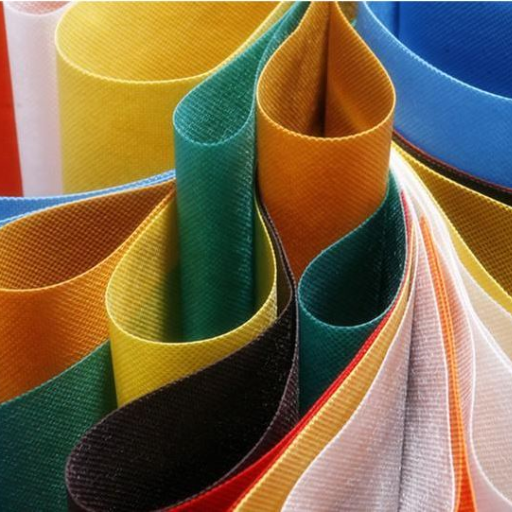
- Thermal Sensitivity
The melting point of polypropylene is relatively low, ranging from 130℃ to 170℃, depending on the additives and formulation used. This results in its unsuitability in situations where high temperatures or direct heat are applied to these materials, with the risk of the material undergoing deformation, shrinkage, or melting.
- UV Susceptibility
Polypropylene, without the addition of certain stabilizers, suffers greatly from UV degradation. With continuous exposure to sunlight, the material will tend to become brittle, lose its mechanical integrity, and degrade over time, thereby hampering its use for outdoor or heavily exposed applications. Research suggests that after 6 months of constant exposure to UV rays, polypropylene fibers lose approximately 25-30% of their tensile strength.
- Limited Dyeability
Being non-polar and hydrophobic, dyeing polypropylene by conventional methods is improbable since dyes can’t firmly bond to its surface. Special techniques such as solution dyeing during production need to be used, which consequently increases the manufacturing costs and limits the colors that can be realized.
- Flammability
- Environmental Concerns
Although polypropylene is recyclable, its end-of-life treatment remains difficult. Improper disposal will see its decomposition in the environment for hundreds of years. On the other hand, if polypropylene is incinerated without proper control, it can emit harmful gases, including carbon monoxide and other volatile organic compounds (VOCs).
Sensitivity to Heat and Its Implications
Polypropylene has such slight heat resistance that the application of this property either maximizes its performance or compromises its performance. From its melting range of about 130°C to 171°C (266°F to 340°F), it suits many thermally based processing techniques, such as injection molding and extrusion. However, being exposed to high temperatures above its thermal stability for long periods causes degradation of the material. Degradation is often observed by loss of mechanical strength, discoloration, and secondary by-products from thermal oxidation which hinder its performance in high-stress situations.
From a manufacturing perspective, this feature requires that processing temperatures be controlled precisely to prevent the occurrence of unwanted chemical or physical transformations. In end-use cases, polypropylene may require heat stabilization to be added due to its continued applicability at elevated temperatures, as seen in automotive and industrial applications. The advancement of new formulations to improve the thermal resistance of polypropylene remains a significant thrust for research, driven by the demand for low-cost, high-performance materials.
Limited Biodegradability of Polypropylene
Reference Sources
-
What is Polypropylene Fabric: Uses & Properties of PP Material: Polypropylene fabric is a versatile textile made from thermoplastic polymer. It is lightweight, durable, moisture-resistant, and recyclable. Common applications include reusable shopping bags, medical masks, upholstery, and performance wear. The material is also resistant to stains, fading, and chemicals, making it easy to clean and maintain.
-
The Guide to Polypropylene Filter Fabrics and Their Applications: Polypropylene filter fabrics are widely used in filtration systems for water, air, and industrial processes due to their chemical resistance, durability, and cost-effectiveness. Applications include wastewater treatment, food and beverage production, and automotive air filters. The material is also recyclable and biologically resistant.
Frequently Asked Questions (FAQs)
Q: What are the common uses of polypropylene fabric?
A: Polypropylene fabric is commonly used in various applications such as packaging, construction, and agriculture. It is a versatile material that serves as a reliable choice for products like polypropylene bags and landscape fabric. Additionally, its lightweight and durable properties make it ideal for outdoor use, where it can withstand various environmental conditions. The fabric is also used in the production of disposable items, such as medical supplies, due to its hygienic qualities. With the development of polypropylene, the range of applications continues to expand across different industries.
Q: What are the unique properties of polypropylene woven fabric?
A: Polypropylene woven fabric possesses unique properties that make it highly advantageous for many applications. It is lightweight, resistant to moisture, and exhibits excellent strength, making it suitable for both indoor and outdoor use. This woven fabric is also UV resistant, which contributes to its durability when exposed to sunlight. Furthermore, polypropylene can be recycled, adding an eco-friendly aspect to its use. These properties allow polypropylene woven fabrics to be utilized in a variety of industries, from agriculture to automotive.
Q: What types of polypropylene products are available?
A: There are several types of polypropylene products available, each designed for specific applications. These include polypropylene bags, woven polypropylene fabrics, and various types of industrial materials. Some products are designed for lightweight tasks, while others are engineered to handle heavy-duty applications. Additionally, there are forms of polypropylene used in construction and textiles, demonstrating its versatility. The benefits of polypropylene extend to both consumer products and industrial uses, making it a staple in many sectors.
Q: How does polypropylene fabric contribute to sustainability?
A: Polypropylene fabric contributes to sustainability in several ways. Firstly, its lightweight nature reduces transportation costs and energy consumption during shipping. Moreover, polypropylene can be recycled, which minimizes waste in landfills and encourages the reuse of materials. The durability of polypropylene fabric means that products made from it tend to have a longer lifespan, reducing the need for frequent replacements. Additionally, the commercial production of polypropylene has evolved to incorporate more environmentally friendly practices, further enhancing its sustainability profile.
Q: What advantages does using polypropylene offer?
A: Using polypropylene offers numerous advantages, particularly in terms of performance and cost-effectiveness. It is a thermoplastic polymer that provides excellent resistance to chemicals and moisture, making it suitable for a wide range of applications. The fabric is also relatively inexpensive compared to other materials, providing a budget-friendly option for manufacturers and consumers alike. Additionally, polypropylene’s unique properties make it an excellent choice for both indoor and outdoor products. As a versatile material, it continues to gain popularity across various industries, including textiles and packaging.














